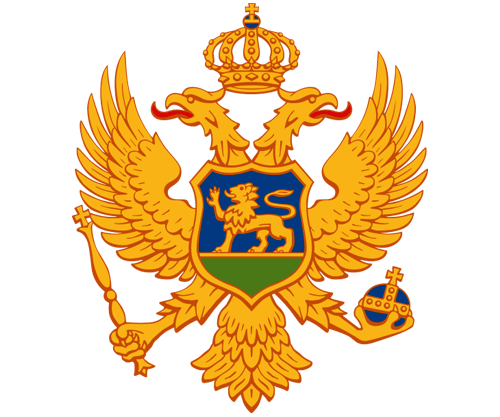Capacity Building for Environmental Policy Institutions for Integration of Global Environment Commitments in Montenegro
Project Overview
Project component 1 focused on developing national capacities for improved management and implementation of the three Rio Conventions by developing global environmental management indicators as part of the Montenegro's environmental governance regime. Component 2 of the project was a complementary capacity building set of activities, developing individual and institutional capacities to use global environmental management indicators as a monitoring tool to assess the intervention performance and institutional sustainability.
Montenegro's National Capacity Self-Assessment (NCSA) identified a number of common weaknesses in the national implementation of the Rio Conventions. As a result, the NCSA Action Plan prioritized a suite of national cross-cutting capacity development actions. The top priority action identified was to harmonize the country's environmental legislative framework so that it becomes fully compliant with Rio Convention commitments. This project was an important contribution to this objective by developing and piloting the application of global environmental management indicators that will help Montenegro assess the extent to which policy interventions are achieving global environmental benefits.
Project Details
As a priority objective of the three Rio Conventions, donors and the GEF, the strategic approach of capacity development is directed towards facilitating cross-sectoral and participatory approaches to natural resource management planning and implementation. Guided by the GEF “Strategic Approach to Enhance Capacity Building”, approved by the GEF Council in November 2003, this Multi-Focal Area project is guided by the principle of targeting capacity development activities across focal areas (cross-cutting) in order to create synergies.
Project component 1 focuses on developing national capacities for improved management and implementation of the three Rio Conventions by developing global environmental management indicators as part of the Montenegro's environmental governance regime. Component 2 of the project is a complementary capacity building set of activities, developing individual and institutional capacities to use global environmental management indicators as a monitoring tool to assess the intervention performance and institutional sustainability.
Montenegro's National Capacity Self- Assessment (NCSA) identified a number of common weaknesses in the national implementation of the Rio Conventions. As a result, the NCSA Action Plan prioritized a suite of national cross-cutting capacity development actions. The top priority action identified was to harmonize the country's environmental legislative framework so that it becomes fully compliant with Rio Convention commitments. This project will be an important contribution to this objective by developing and piloting the application of global environmental management indicators that will help Montenegro assess the extent to which policy interventions are achieving global environmental benefits.
Montenegro has approved a number of strategies and plans to address the causes and impacts of climate change, biodiversity and land degradation. Despite these positive developments there still exists a considerable fragmentation of mandates and responsibilities within and among many institutions in the field of environment. The Ministry for Sustainable Development and Tourism (MSDT) is not the only ministry responsible for aspects of environmental protection. The largest area of environmental policy that is not within the mandate of the Ministry of Spatial Planning and Environment (MSPE) is water, which instead falls under the Ministry of Agriculture, Forestry and Foods (MAFF).
A number of other ministries are responsible for certain aspects of environmental protection, such as the Ministry of Health, which is responsible for the management and treatment of medical waste and the Ministry of Transport, Maritime Affairs and Telecommunications, which is responsible for addressing the causes and impacts of marine pollution. There are a number of other national administrative institutions that serve to implement and enforce environment-related provisions of national policies, programmes and plans, such as the Hydrometeorological Institute, the Seismological Institute and the Office of Public Works.
The Environmental Protection Agency was established in order to effectively perform professional activities related to environmental monitoring, collection and dissemination of data and coordination and management of the national information system of environmental protection.
The expected outcome of this project is that a systematic and sustainable approach to assessing global environmental achievements through the implementation of national policies, programmes and plans has been initiated. This project will also be an important contribution to the national experiences in developing and implementing tools and practices for measuring, reporting, and verifying the cost-effectiveness of official development assistance to implementing multilateral environmental agreements, in particular the Rio Conventions.
The project is targeting the use and mainstreaming of global environmental indicators within the construct of regional development and spatial planning with a view to meeting the objectives of global environmental conventions at the national, regional, district and municipal levels. The EMIS will also help the EPA to monitor and evaluate the effectiveness of policies, programmes, and plans structured to meet environment and development objectives under the overall rubric of the NSSD.
A Data Flow System (with specific protocols regarding the collection, storage, analysis and dissemination of the data based on indicators) will be designed for EPA and Hydro-meteorological Institute, as well as other institutions concerned with CBD, CCD, and FCCC implementation. The project is reconciling these global environmental indicators with other target indicators that are being introduced to assess the implementation of the National Spatial Plan 2020 and Tourism Master Plan 2020 at the regional level, with special attention to assessing low-emission, climate resilient development strategies (LECRDS).
Source: Montenegro and the GEF (2011)
Key Results and Outputs
- Outcome 1: Environmental management information system and indicator framework for global environmental management developed and applied on a pilot basis
- Output 1.1: Set of uniform indicators and guidance for application developed for measuring the contribution of regional development policy and spatial planning to meeting global environmental objectives
- Output 1.2: Data Flow System (regulations / protocols) designed and introduced for institutions concerned with CBD, CCD, UNFCCC and issues
- Output 1.3: A web-based advanced tools for environmental data / metadata storage for environmental policy formulation tested and adopted
- Output 1.4: Application of indicator system for global environment integration piloted in relation to National Spatial Plan-2020 and Tourism Master Plan - 2020
- Outcome 2: Institutional capacity of the Environmental Protection Agency strengthened to perform compliance monitoring in relation to global environmental conventions and a system of knowledge management established
- Output 2.1: Institutional reforms (based on a functional analysis performed through a consultative process) undertaken to enable incorporation of global environment commitments into planning and monitoring processes
- Output 2.2: Accredited training programme developed and delivered for the Environmental Protection Agency staff and other relevant organizations (on advanced planning tools, information systems for global and national environmental management, indicators and trend analysis methods)
- Output 2.3: The “Environmental Sustainability Theme Manager Office” system for integration of global environmental objectives customized and introduced at the Environmental Protection Agency
- Output 2.4: M&E and risk management system established
- Output 2.5: A web-based environmental project database for improved coordination and output analysis established
- Outcome 3: Knowledge sharing and project management
- Output 3.1: Project communication strategy developed
- Output 3.2: Lessons learned and knowledge products produced
- Output 3.3: Project website for wider dissemination established
Reports and Publications
Reports and Publications of relevance to Country Teams
Risk-Proofing the Western Balkans: Empowering People to Prevent Disasters
Project Brief / Fact Sheet
Capacity Building for Environmental Policy Institutions for Integration of Global Environment Commitments in Montenegro - Project Brief (2011)
Document
Capacity Building for Environmental Policy Institutions for Integration of Global Environment Commitments in Montenegro - Request for CEO Approval Document (June 2011)
Monitoring and Evaluation
Project Start:
Project Inception Workshop: will be held within the first 2 months of project start with those with assigned roles in the project organization structure, UNDP country office and where appropriate/feasible regional technical policy and programme advisors as well as other stakeholders. The Inception Workshop is crucial to building ownership for the project results and to plan the first year annual work plan.
Daily:
Day to day monitoring of implementation progress: will be the responsibility of the Project Manager, based on the project's Annual Work Plan and its indicators, with overall guidance from the Project Director. The Project Team will inform the UNDP-CO of any delays or difficulties faced during implementation so that the appropriate support or corrective measures can be adopted in a timely and remedial fashion.
Quarterly:
Project Progress Reports (PPR): quarterly reports will be assembled based on the information recorded and monitored in the UNDP Enhanced Results Based Management Platform. Risk analysis will be logged and regularly updated in ATLAS.
Annually:
Annual Project Review/Project Implementation Reports (APR/PIR): This key report is prepared to monitor progress made since project start and in particular for the previous reporting period (30 June to 1 July). The APR/PIR combines both UNDP and GEF reporting requirements.
Periodic Monitoring through Site Visits:
UNDP CO and the UNDP RCU will conduct visits to project sites based on the agreed schedule in the project's Inception Report/Annual Work Plan to assess first hand project progress. Other members of the Project Board may also join these visits. A Field Visit Report/BTOR will be prepared by the CO and UNDP RCU and will be circulated no less than one month after the visit to the project team and Project Board members.
Mid-Term of Project Cycle:
Mid-Term Evaluation: will determine progress being made toward the achievement of outcomes and will identify course correction if needed. It will focus on the effectiveness, efficiency and timeliness of project implementation; will highlight issues requiring decisions and actions; and will present initial lessons learned about project design, implementation and management. Findings of this review will be incorporated as recommendations for enhanced implementation during the final half of the project’s term.
End of Project:
Final Evaluation: will take place three months prior to the final Project Board meeting and will be undertaken in accordance with UNDP and GEF guidance. The final evaluation will focus on the delivery of the project’s results as initially planned (and as corrected after the mid-term evaluation, if any such correction took place). The final evaluation will look at impact and sustainability of results, including the contribution to capacity development and the achievement of global environmental benefits/goals. The Terminal Evaluation should also provide recommendations for follow-up activities.
Project Terminal Report: This comprehensive report will summarize the results achieved (objectives, outcomes, outputs), lessons learned, problems met and areas where results may not have been achieved. It will also lie out recommendations for any further steps that may need to be taken to ensure sustainability and replicability of the project’s results.
Learning and Knowledge Sharing:
Results from the project will be disseminated within and beyond the project intervention zone through existing information sharing networks and forums.
The project will identify and participate, as relevant and appropriate, in scientific, policy-based and/or any other networks, which may be of benefit to project implementation though lessons learned. The project will identify, analyze, and share lessons learned that might be beneficial in the design and implementation of similar future projects.
Finally, there will be a two-way flow of information between this project and other projects of a similar focus.





